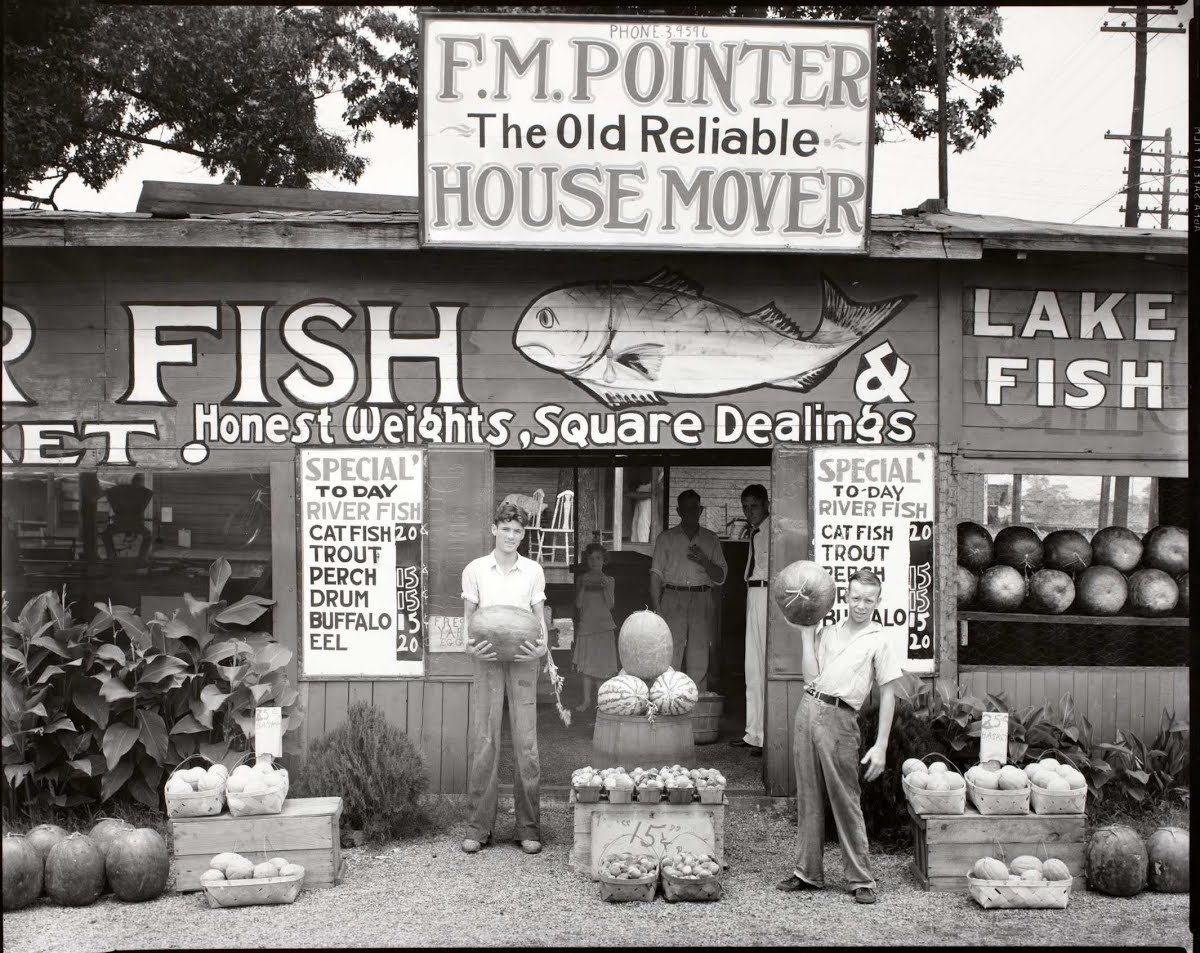Visual Art Analysis
Artwork analyzed:
Walker Evens
(b. 1903, d. 1975)
Roadside Stand near Birmingham, 1935
The Great Depression was one of the worst economic crises in the US as many Americans went unemployed, subsequently losing their homes and having to live in shack-like houses, indeed the Depression era was not the best to live. Roadside Stand near Birmingham, 1935 captures that narrative as it shows, possibly a family running a business. It’s worth noting that Birmingham, Alabama was one of the hardest-hit cities with unemployment going from 100,000 to 15,000, an 85% decrease! The people in the image may very well be the few who do have some kind of revenue as they have sales over various types of produce and meats with specials. However, with the city having people jobless, any kind of revenue for this business is hard to get. Seeing this image reminded me of ‘Hoovervilles’ which were essentially communities largely populated by shack-like houses(not the best housing condition) tight-packed with one another. These ‘Hoovervilles’ are the result of people losing their homes and finding ways to shelter their families during The Great Depression.
More on Walker Evens, was a photojournalist working for the Farm Security Administration, worked to combat rural poverty during The Great Depression. The Farm Security Administration would promote soil conservation, attain proper land for poor farmers, and provide economic relief plans such as loans so farmers can get better resources. It’s worth mentioning The Dust Bowl happened during this era, mainly because of farmers’ poor techniques, high temperatures and so much more. Walker Evens most likely took an image of the roadside stand business to push the agenda of helping the farmers out and raising their incomes.
As a photojournalist, it must’ve been important for Evens to take a presentable photo that can convey the Agency’s purpose. Notice how everything is in place, from the signs to the way the produce is placed, although this may be seen as normal, Evens might’ve taken the image as a way to show how the agency’s success(assuming the business is a member of it). If the claim was to show the agency’s success then the way the photo is presented supports that narrative, as we have a piece of evidence of a farmer’s business, it’s credible and makes the audience trust in the agency’s purpose. Furthermore, this photo can also set to its audience, the farmers, that there is hope and to have faith in the FSA agency, overall creating a sense of trustworthiness and hopeful spirits. My final thoughts were why was the image cropped but soon found out that it may be his camera that limited him from taking bigger photos.

I really like how your analysis gave a lot of background information of the Great Depression, as it is a major part of understanding this piece of art.
I found your artwork very interesting because looking at it looks vague but your analysis goes in-depth about how important and great this piece really is.